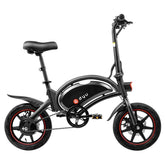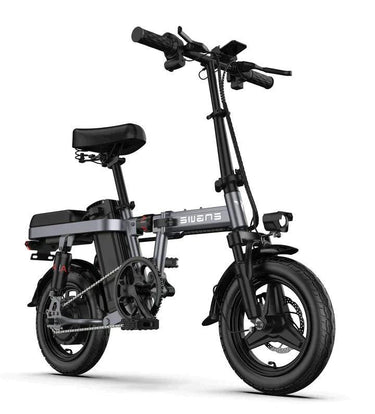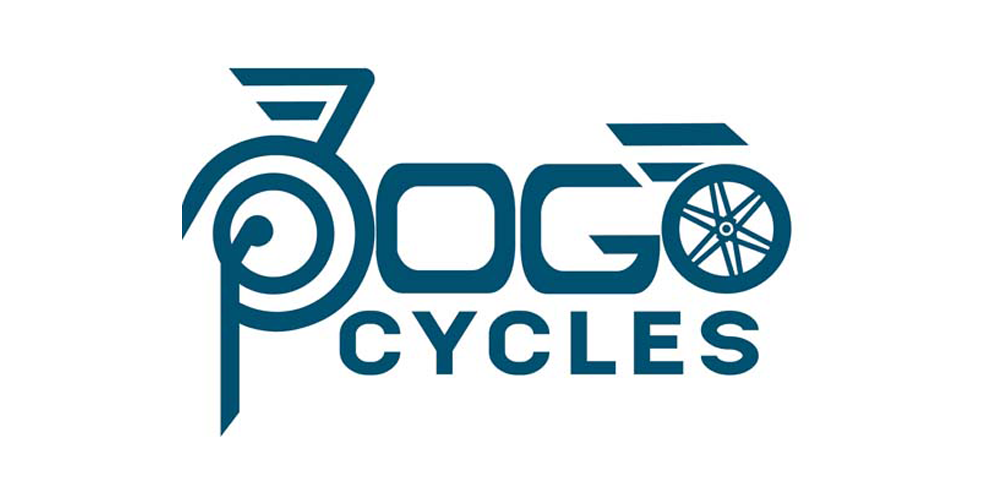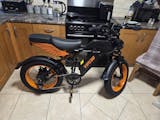Fat Tyre Electric Bikes
A new sub-trend that was influenced by both electric and fat bikes is the fat tyre electric bike.
In essence, a fat tyre eBike provides an additional kick that is essential when traveling on paths in the sand, snow, or mountains. Electric fat tire bikes are more practical for longer rides and hilly terrain than non-electric versions. E-fat tire bikes are a popular choice for commuters because they are comfortable.
Fat Tire Ebikes' Advantages:
Here are a few benefits of purchasing fat tyre electric bikes.
-
Risk-taking
For difficult terrains like mud and snow, these are perfect. Fat tire ebikes are daring because of this.
-
Fun
E-bikes with large tyres are a tonne of fun, and the experience is priceless.
-
Practical
The low tyre pressure makes riding the fat tyre electric bikes more comfortable.
-
Flexibility
The best electric bikes with fat tyres can be used for many different things. A fat tyre electric bicycle can be used on any surface.
-
Simple to Ride
Because there is more surface area in contact with the road thanks to the fat tyres, these are simple to ride. As a result, it promotes balance.
E bikes with fat tires specification:
So what exactly is an electric bike with fat tyres? It is, in a nutshell, any electric bicycle with tyres that are 4 inches or wider. The majority of fat tyre electric scooters have 4" tyres, but some even have ultra fat tyres, which have widths of 4.5" and even 4.8". Contrarily, standard bicycle tyres range in width from 1.95", 2.0", 2.1", 2.3", and 3.0".
The most popular tyre diameters for bicycles are 20", 24", and 26", but 4" or wider widths are a common characteristic of fat tyres.
With fat tyres, you can ride at a variety of pressures, expressed in pounds per square inch. The majority of fat tyres can be inflated between 5 and 30 psi, allowing you to modify the tyre pressure to fit the terrain. The optimal tyre for paved roads is one with a tight 30 psi rating but, on soft terrain like wet sand or snow, lowering the psi will improve surface area contact and give greater float.
There are various different types:
Fat tyre e bikes, including step-through models, folding models, and possibly the most popular, fat tyre electric mountain bikes. Tire width remains the common factor.
The weight of the bicycle is often increased by 4 pounds due to the wider tyres and larger rims. Rim cuts can help to lessen this by reducing the mass of the rim. Although four pounds may not seem like much, keep in mind that this is in addition to the weight of the controller, battery, and motor.
Therefore, fat tyre electric bikes tend to be heavier than other electric bikes and unquestionably heavier than traditional bicycles. When you're riding, this won't be a problem, but it might be if you have to load your bike onto a rack or carry it up and down stairs.
What advantages do fat tires offer?
- Fat tyres have a greater footprint than standard tyres. Whether you are riding on a paved road, a gravelly and rutted track, across a snowy field, or down a sandy beach, there is more surface area contact.
- More stability and excellent traction are two advantages of the increased surface area contact.
- Technically speaking, rolling resistance is the friction that occurs between your tire and the ground. You will move more slowly the more friction there is. Poor road conditions, inferior tyres and tubes, rider weight, and speed all generate friction and cause you to go more slowly.
- Both paved and unpaved surfaces need stability. On paved surfaces, stability in turns can stop the bike from slipping out from under you and losing its hold. Stability will help you stay balanced as you navigate changes in surface conditions, stumps, and rocky lines on unpaved surfaces. A benefit of having more traction is that it will avoid slide-outs and transmit more of the motor's power via the drivetrain directly to the riding surface.
- The ability of fat tyres to function well on soft surfaces, such as snowy and sandy conditions, is another advantage. The tire's capacity to float over soft material rather than slice through it is commonly referred to as flotation.
- Fat tyres will ride over the sand rather than dig into it on sandy beaches.
However, other elements also come into play, such as the rider's weight and the amount of power their bike has. Even with the aid of a strong motor, it will still be necessary to push through snow drifts and dense, dry sand. There is no doubt that you will work out.








